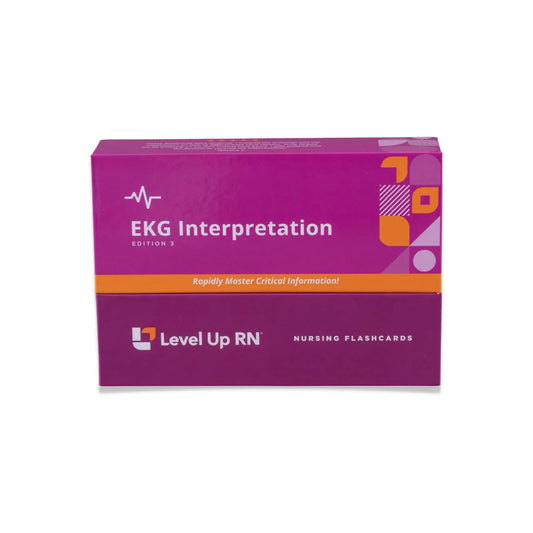This is the introductory video and article in our EKG interpretation video series. We built this series to help nurses and nursing students learn how to identify and analyze EKG strips, however, other medical professionals or students may find value in this video series too!
Throughout this video series, we will be referencing our EKG Interpretation Flashcards. You don't need to have these flashcards in order to be able to follow along and to get value out of this video series, however, they are helpful as a reference and to learn through repetition, which is always important in nursing school.
In this video series, we cover:
- Placement of EKG leads, Heart Conduction System and EKG Basics
- Analysis of Heart Rhythm, Heart Rate, P wave, PR interval and QRS complex
- Natural Pacemakers of the Heart - Key Differentiating Factors
- Sinus Rhythms
- Atrial Rhythms
- Junctional Rhythms
- Ventricular Rhythms
- Atrioventricular Blocks (AV Blocks)
- Other EKG Abnormalities
- Artificial Pacemakers, Tachycardia and Bradycardia



3 comments
I took EKG Course many moons 1986 years ago. And would like to freshen up on skills and any new educational learning experience. Sincerely GaleAnn Parry LPN
Hi Cathy! I am currently in training for an EKG tech. I am so thankful I came across your videos. Your explanation on topics were spot on. I was able to understand more clearly because of you. Thank you for sharing your videos!!
Hi Cathy,good to be here